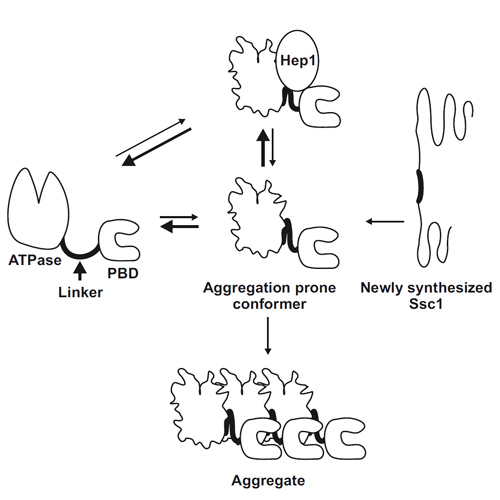ATPase domain and interdomain linker play a key role in aggregation of mitochondrial Hsp70 chaperone Ssc1
10-Dec-2009
Mol. Biol. Cell, in press, doi:10.1074/jbc.M109.061697 published on 10.12.2009
J. Biol. Chem., online article
J. Biol. Chem., online article
The co-chaperone Hep1 is required to prevent the aggregation of mitochondrial Hsp70 proteins. We have analyzed the interaction of Hep1 with mitochondrial Hsp70 (Ssc1) and the determinants in Ssc1 which make it prone to aggregation. The ATPase and the peptide binding domain (PBD) of Hsp70 proteins are connected by a linker segment that mediates interdomain communication between the domains. We show here that the minimal Hep1 binding entity of Ssc1 consists of the ATPase domain and the interdomain linker. In the absence of Hep1, the ATPase domain with interdomain linker had the tendency to aggregate, in contrast to the ATPase domain with mutated linker segment or without linker, and in contrast to the PBD. The closest homolog of Ssc1, bacterial DnaK, and a Ssc1 chimera, in which a segment of the ATPase domain of Ssc1 was replaced by the corresponding segment from DnaK, did not aggregate in Δhep1 mitochondria. The propensity to aggregate appears to be a specific property of the mitochondrial Hsp70 proteins. The ATPase domain in combination with the interdomain linker is crucial for aggregation of Ssc1. In conclusion, our results suggest that interdomain communication makes Ssc1 prone to aggregation. Hep1 counteracts aggregation by binding to this aggregation-prone conformer.











